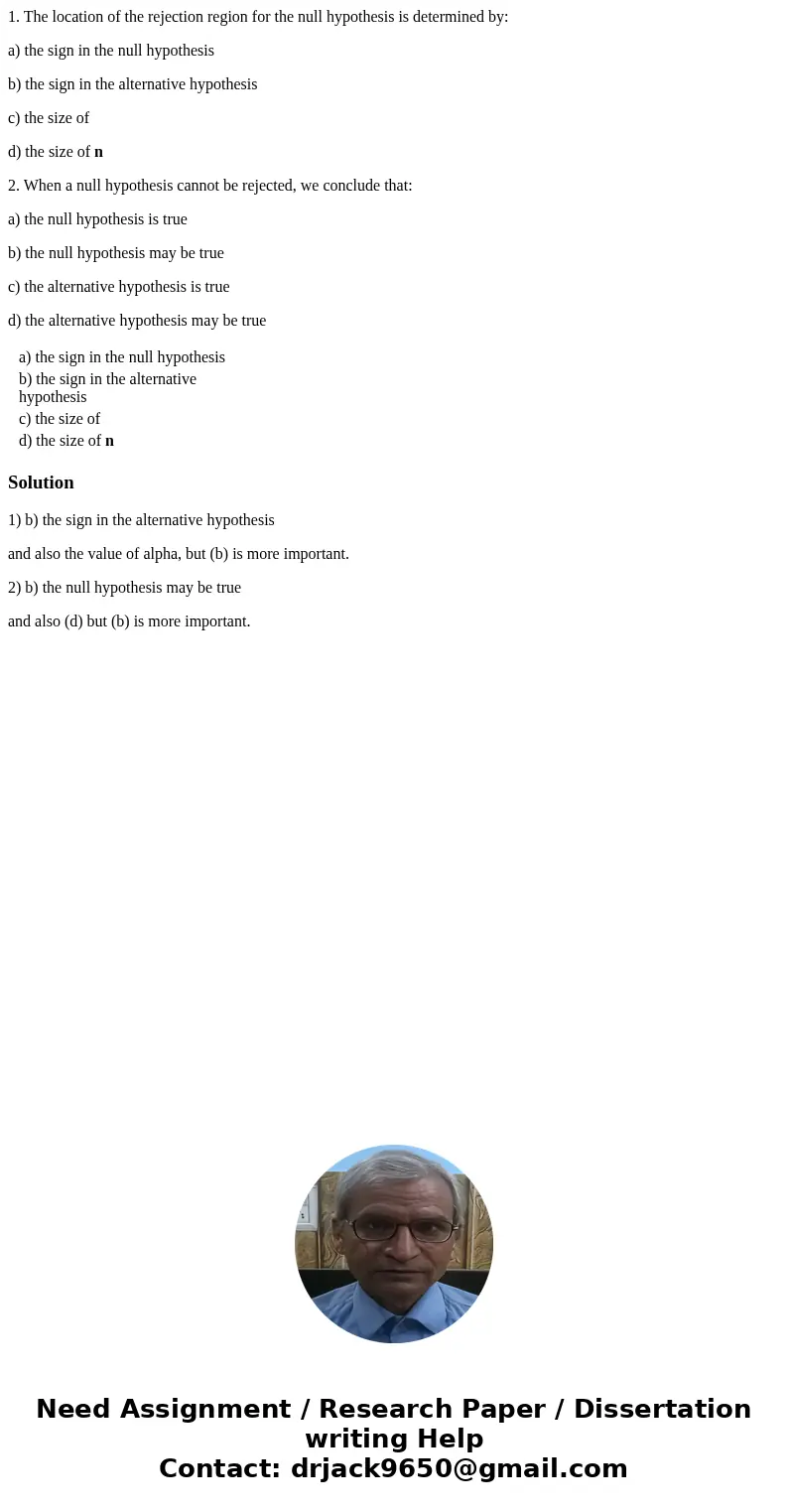1 The location of the rejection region for the null hypothes
1. The location of the rejection region for the null hypothesis is determined by:
a) the sign in the null hypothesis
b) the sign in the alternative hypothesis
c) the size of
d) the size of n
2. When a null hypothesis cannot be rejected, we conclude that:
a) the null hypothesis is true
b) the null hypothesis may be true
c) the alternative hypothesis is true
d) the alternative hypothesis may be true
| a) the sign in the null hypothesis | ||
| b) the sign in the alternative hypothesis | ||
| c) the size of | ||
| d) the size of n |
Solution
1) b) the sign in the alternative hypothesis
and also the value of alpha, but (b) is more important.
2) b) the null hypothesis may be true
and also (d) but (b) is more important.

 Homework Sourse
Homework Sourse